Table of Contents
Bengaluru, once the ‘Garden City,’ now stands at a crossroads, grappling with rapid urban expansion that threatens its environment, infrastructure, and identity. The city’s transformation from lush greenery and calm lakes to high-rises and concrete jungles has left residents conflicted. Welcome to the first part of our two-part series on Bengaluru’s shifting landscape. This is a long read, but we promise—it’ll be worth it.
MindBrews reached out to people from all walks of life to gather their thoughts on the rapid changes shaping their city. The responses speak to a city in distress—where development has come at a cost. One respondent captured the collective sentiment: “The Bengaluru I grew up in has faded away. Today, it’s a city of chaos, with green cover and lakes disappearing faster than we can count.” Through this series, we explore these challenges, asking a critical question: How can Bengaluru restore balance between progress and preservation?
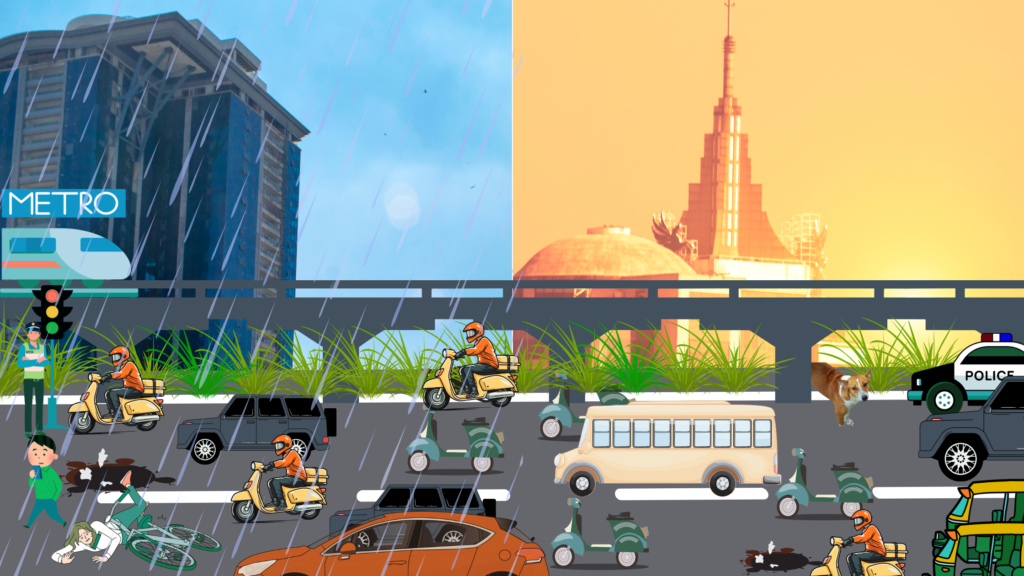
Let’s begin with Bengaluru’s population. As of 2024, Bengaluru’s population is expected to hit 14 million—a staggering leap from just 746,000 in 1950. In the last year alone, over 411,000 people joined the city’s growing ranks, a 2.94% annual increase. But with this rapid growth—has Bengaluru lost its balance? This surge, encompassing both the core urban area and surrounding suburbs, has transformed Bengaluru into a vast metropolitan hub.
But have we traded the city’s soul for progress? While development has brought modern conveniences, it has also strained infrastructure, sparked cultural tensions, and caused severe environmental decline. Over 70% of residents in our survey reported drastic environmental changes— the loss of green spaces, rising pollution, and the vanishing lakes that once defined the city. Uncontrolled urbanization has also triggered heatwaves, with a decrease in trees and a surge in high-rises sending temperatures soaring, making air conditioners the new ‘trees’ of Bengaluru.
From Canopy to Concrete
The rapid transformation of Bengaluru is most evident in its disappearing green cover. Majestic trees and expansive parks once lined areas like Koramangala and Whitefield, but these have now been replaced by towering apartment complexes and tech parks. Over the past three years alone, the city has lost at least 9,703 trees, according to data from the Bruhat Bengaluru Mahanagara Palike (BBMP).
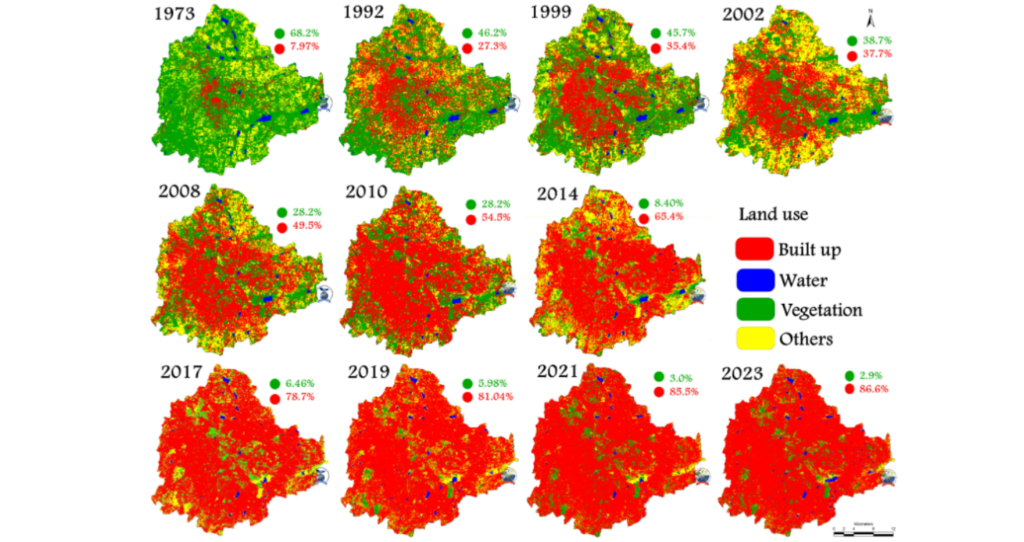
Scientists from IISc have mapped the city’s evolution over the past five decades, revealing alarming findings. Bengaluru’s built-up area has skyrocketed by 1055% since 1973, with vegetation cover shrinking by 88%. As of 2024, the city has just 1.5 million trees for its 14 million residents—roughly one tree for every nine people. This is far from sufficient, as the carbon sequestration needed per person per day ranges from 540 to 900g, according to Professor TV Ramachandra of IISc’s Centre for Ecological Sciences.
Waste Management
The city’s garbage problem has become a major contributor to Bengaluru’s environmental decline. Once-clean streets are now littered with filth, exposing the absence of any clear waste management strategy. Areas like Embassy GolfLinks (EGL), once favored for morning walks, now reek of toxic waste as piles of garbage grow day by day. The city’s increasing population, rampant littering, and lack of proper waste disposal systems have turned Bengaluru into an urban nightmare.

Bengaluru generates around 4,500 metric tons of municipal solid waste daily, with only 60% of it collected and a mere 15% processed. The rest is dumped in landfills or, worse, left to pollute illegal dumping sites.
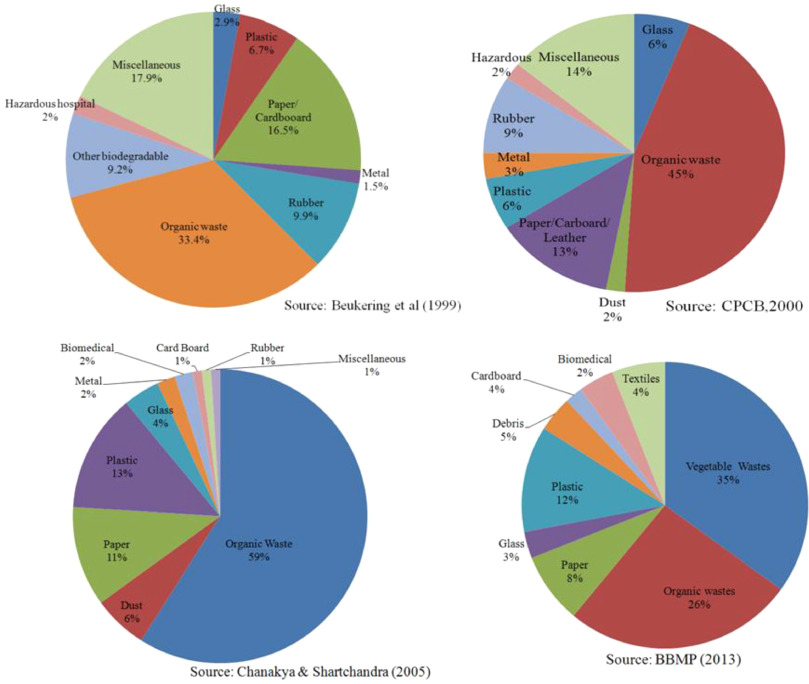

Source: ScienceDirect
Bellandur Lake, once a peaceful retreat, is now infamous for catching fire due to toxic waste. 98% of lakes are encroached upon, and 90% are fed with untreated sewage or industrial effluents. Though restored, we ask: at what cost? Lakes like Varthur and Ulsoor are also rapidly deteriorating, adding to the environmental crisis One respondent aptly described it as “a symbol of the city’s neglect.”

Recycling efforts remain underdeveloped, and landfills, garbage burning, and illegal dumping are widespread. Chances are you have two waste bins at home – one for dry and one for wet. Though this was mandatory by the Karnataka Government, 90%-95% times of the times, there is no segregation happening at the time of collection. BBMP faces significant challenges—limited budget, weak enforcement by-laws, poor infrastructure, and a lack of comprehensive waste and e-waste management policies—further exacerbating the crisis.
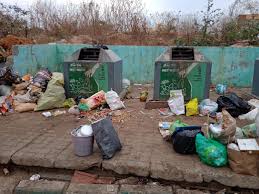
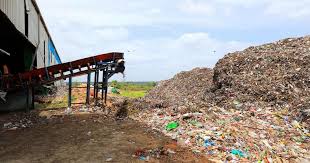

Fencing at Yele Mallappa Shetty Lake aims to curb encroachment and littering
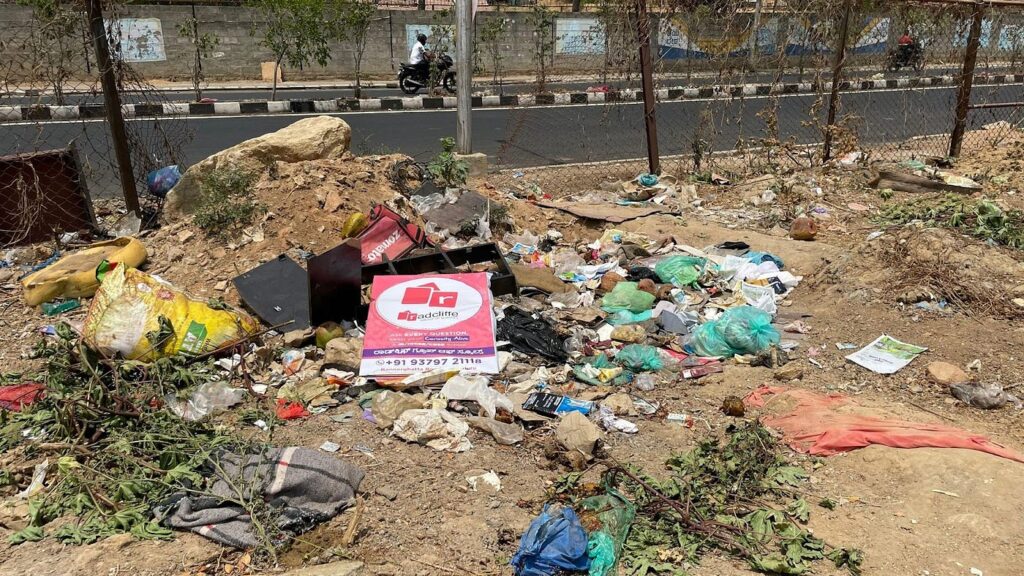
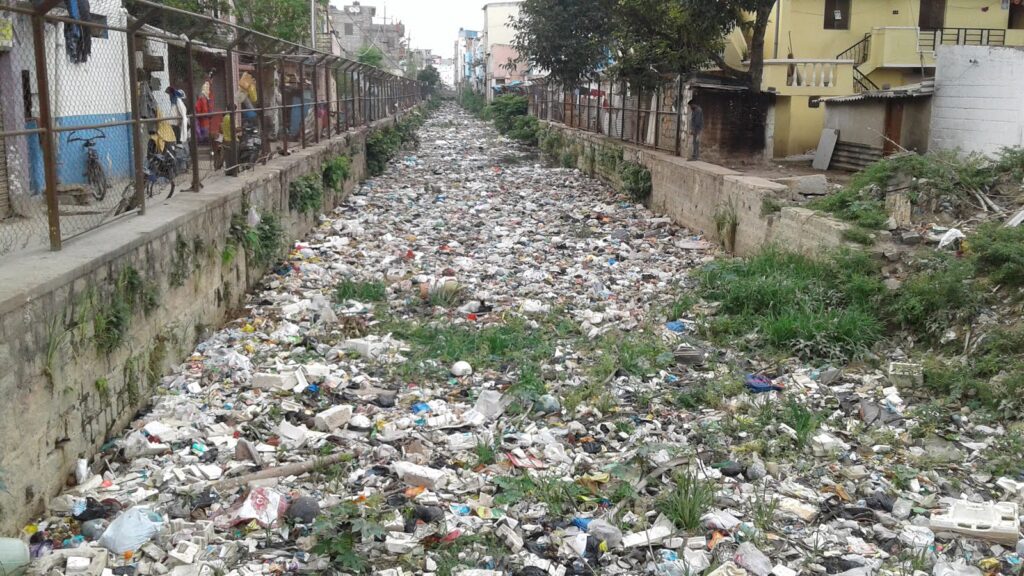
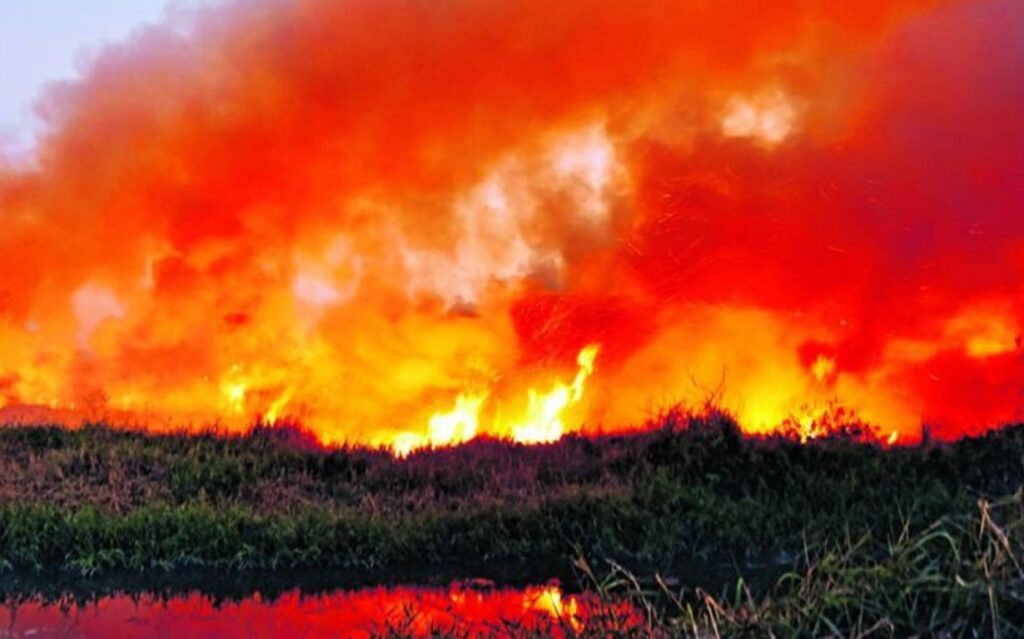
Amid this chaos, some communities are striving to preserve what greenery remains. Initiatives like SayTrees have partnered with schools around Bengaluru, using the Miyawaki method to plant native species and restore biodiversity. They’ve already planted 1,200 trees and aim to reach 10,000 in the coming months, offering hope for a greener future.
The Commute Conundrum
Bengaluru’s environmental woes are only worsened by an infrastructure on the brink of collapse. Traffic jams lasting three to four hours are the new normal, as the number of vehicles far exceeds what the city’s roads can handle. Frustration levels are through the roof, and road rage incidents are becoming dangerously common.
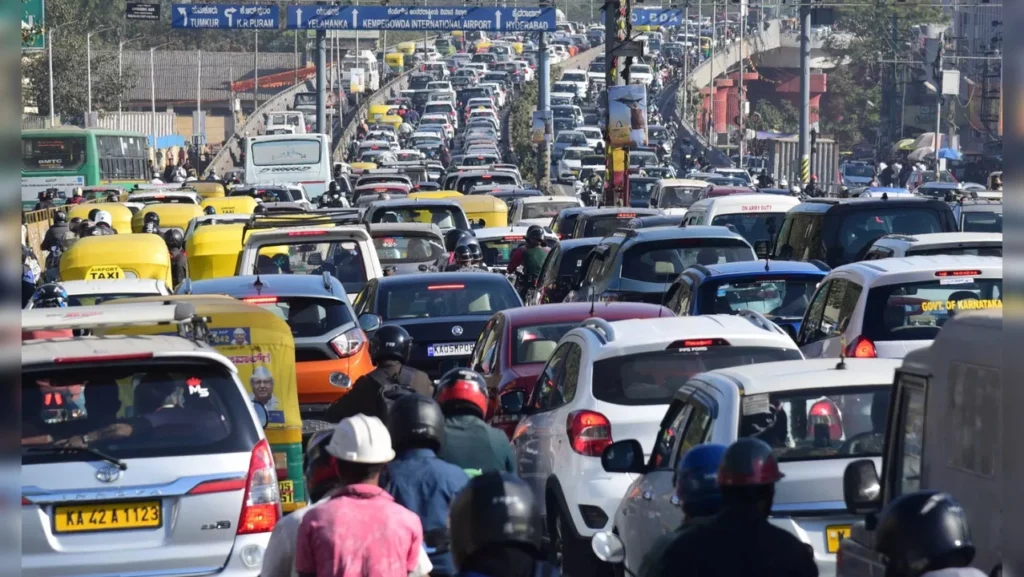
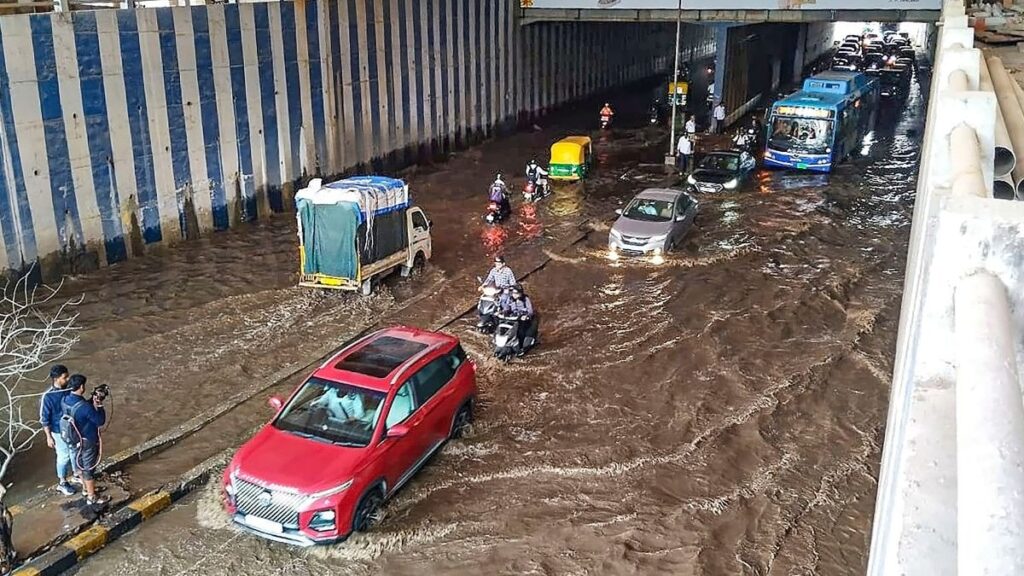
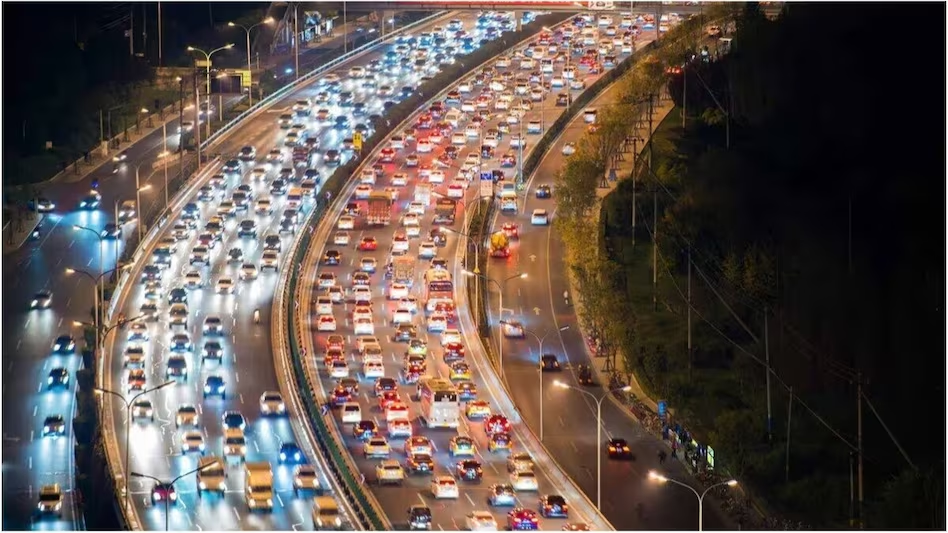
Experts point to mounting traffic, crumbling infrastructure, and post-pandemic stress as triggers, creating a perfect storm of urban pressure. The return to crowded streets after years of remote work has intensified tempers, with social media fueling further divisions. Psychologists warn that rising stress behind the wheel is not only a public safety issue but also a growing mental health crisis, linking road rage to heart disease and anxiety.
We even asked various people what their major mode of transport was and this is what they said.
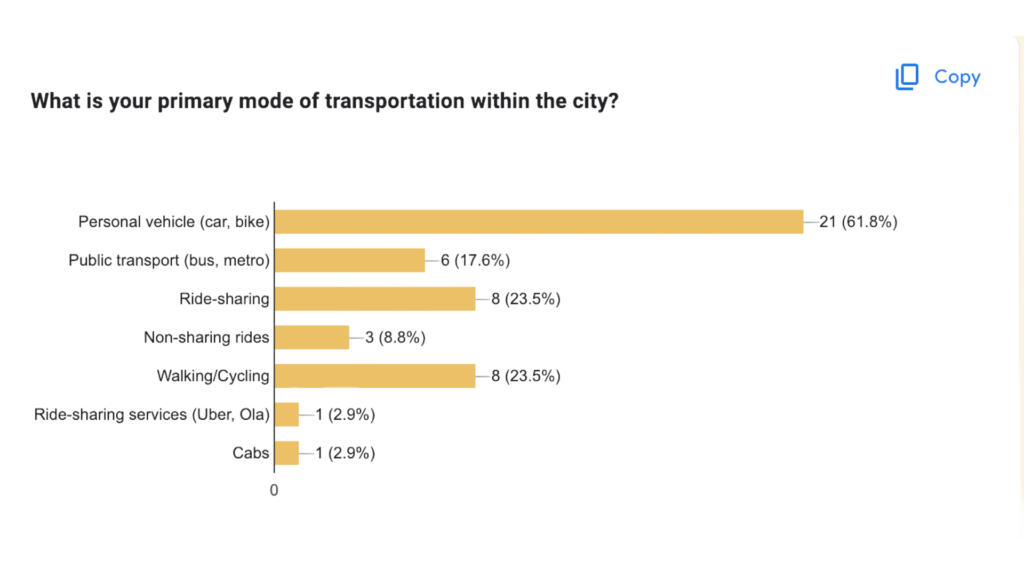
Now, even with this limited data set, we all know we’d prefer our own mode of transport because come on, you’re still reading this article, right? But what if there was an alternate? If there are going to be that many vehicles on the roads anyways, can we try to have a little more conscience?
In a bid to alleviate some of these issues, discussions around sustainable transportation have gained momentum. At a recent roundtable hosted by B.PAC and Uber India, stakeholders emphasized the need for electric vehicles (EVs) in public transport and delivery services. While challenges like charging infrastructure remain, Bengaluru is pushing towards a greener future, with BMTC aiming for a fully electric fleet by 2030 and BESCOM expanding charging stations. However, coordinated efforts are crucial to meet the city’s EV goals and address its infrastructural challenges.
Ride-hailing and delivery services like Swiggy and Zomato are adding to the congestion. Delivery bikes weaving through traffic worsen mobility, with one resident quipping, “It’s faster to get food delivered than to get to your destination.” Delivery executives, particularly from Zomato, have topped the list of traffic violators in the past five years, contributing to Rs 3 crore in fines out of the Rs 7.07 crore owed by app-based companies. 1,54,031 traffic violation cases have been registered against companies like Swiggy, Zomato, Dominos, BOX8, Bounce, Ola, and Vogo.
Always under construction
The metro, once seen as Bengaluru’s traffic savior, has turned into more of a mirage. Years of construction delays and red tape have left residents frustrated. Even the few functional lines barely make a dent in the city’s traffic woes.
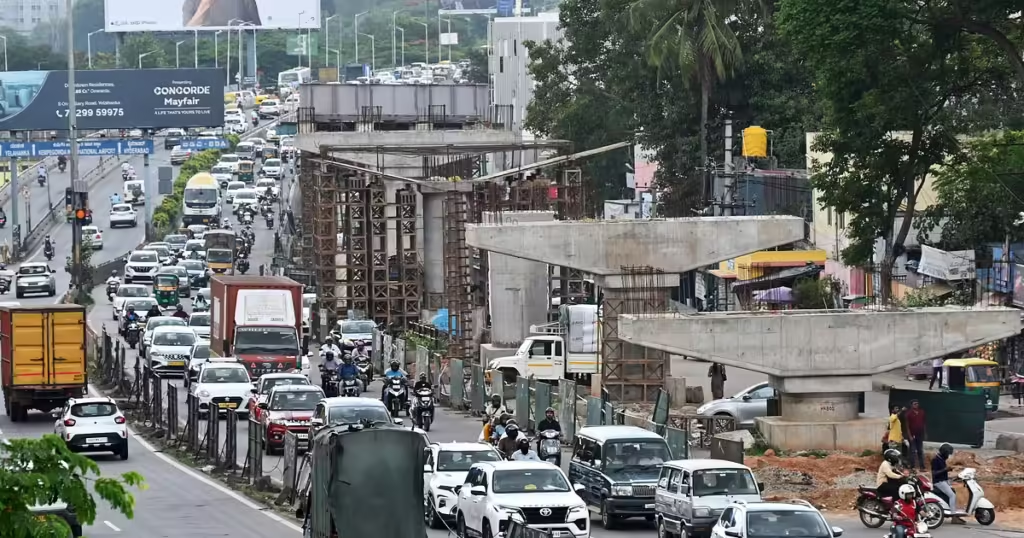
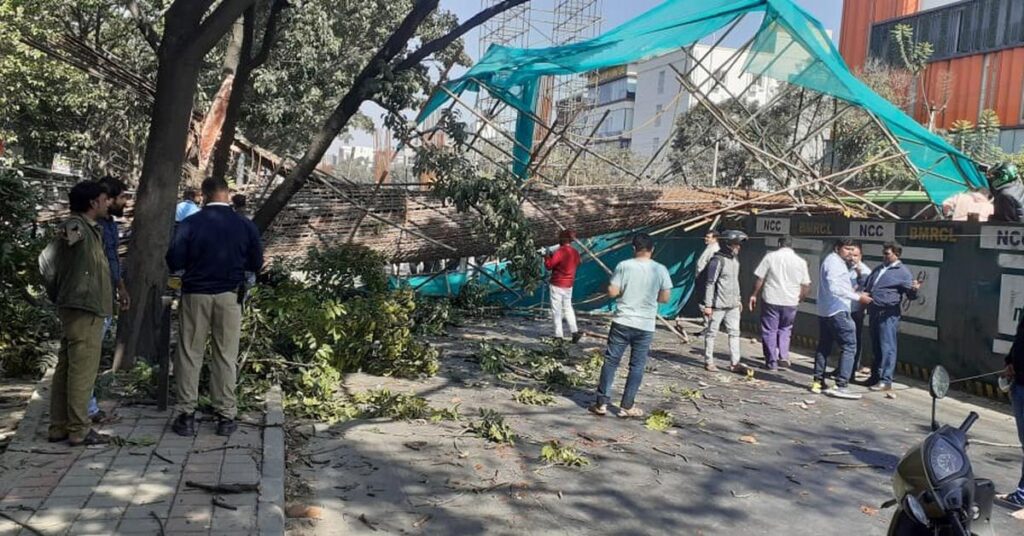
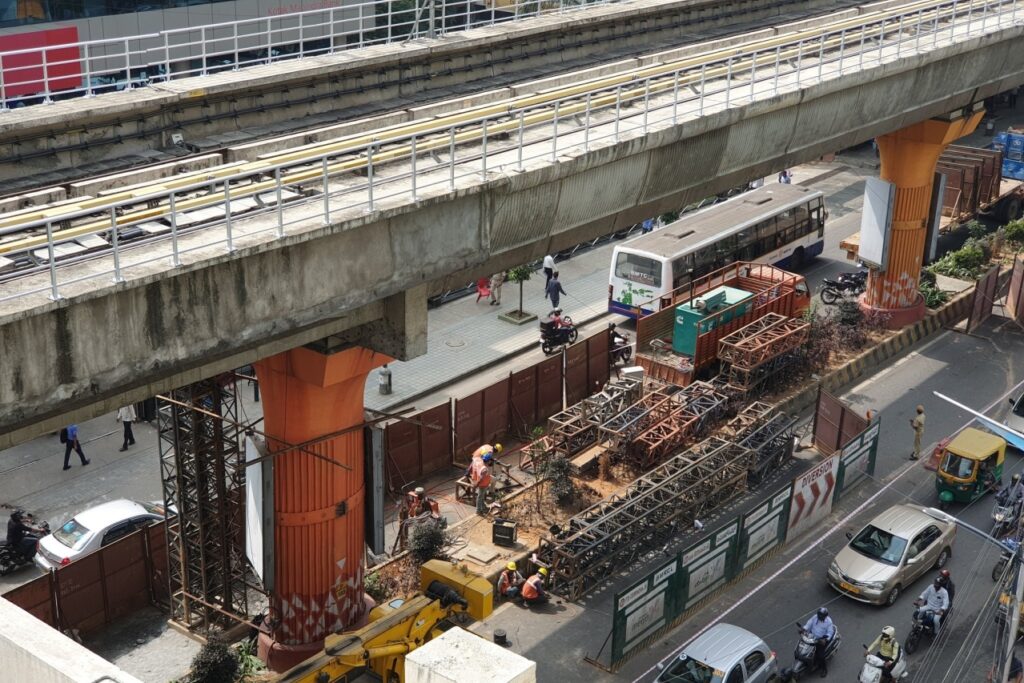
Residents hoping for relief through the much-anticipated Yellow Line to Electronic City will have to wait until 2025, as testing and the integration of advanced technologies like Driverless Train Operation (DTO) and Communications-Based Train Control (CBTC) are still underway. Full service is expected by August 2025, promising a smoother commute once all 15 train sets are operational. Will they deliver? Based on history, well? Let’s just leave that to the future. Let’s talk about now.
From the MindBrews Survey, 2024
“I understand the need for growth, but it’s heartbreaking to see how unplanned this all feels,” said one respondent, while another optimistically noted, “If handled right, Bengaluru could still find a balance between modernity and nature.”
Ironically, older areas like Basavanagudi and Malleswaram, known for their better planning and infrastructure, continue to function more smoothly. This raises the question: why haven’t the lessons from these well-planned neighborhoods been applied to newer developments in the city?
A Water Crisis
Summer 2024 in Bengaluru was more than just hot—it was bone dry. If you were in Bengaluru in this summer, chances are you’ve heard about the water shortage problem – or you’ve faced it yourself. As temperatures soared, thousands of residents were forced to pay exorbitant prices for water tankers to deliver usable water to their homes. Across neighborhoods like Whitefield, BTM Layout, and Dairy Circle, people drilled wells as deep as 1,000 feet, desperate for water.
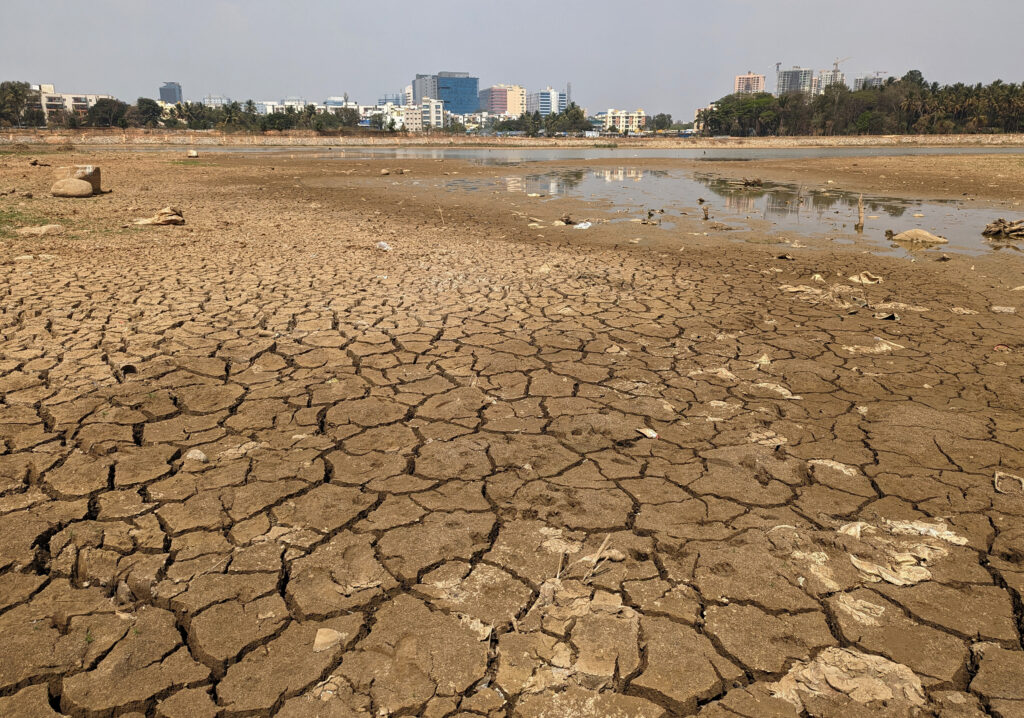
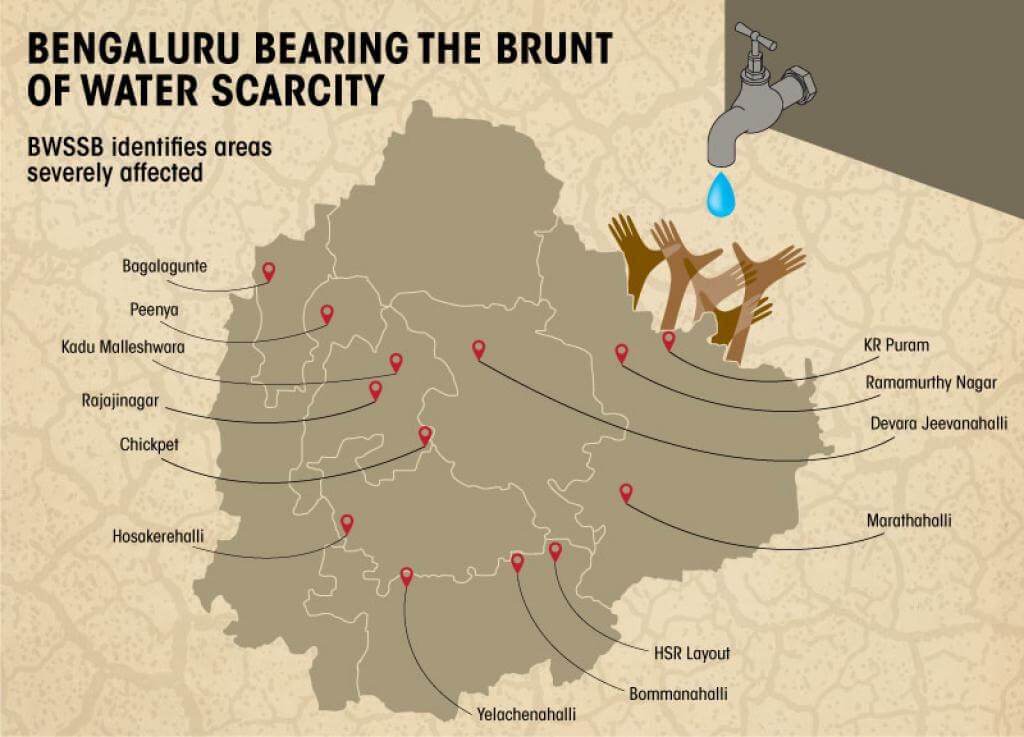
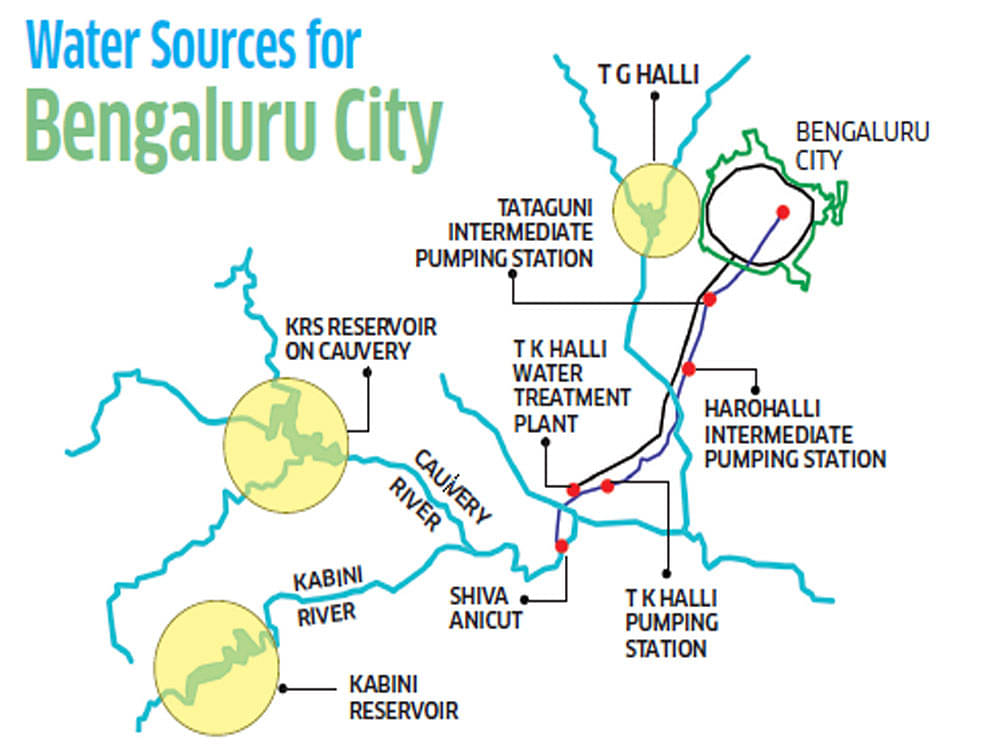
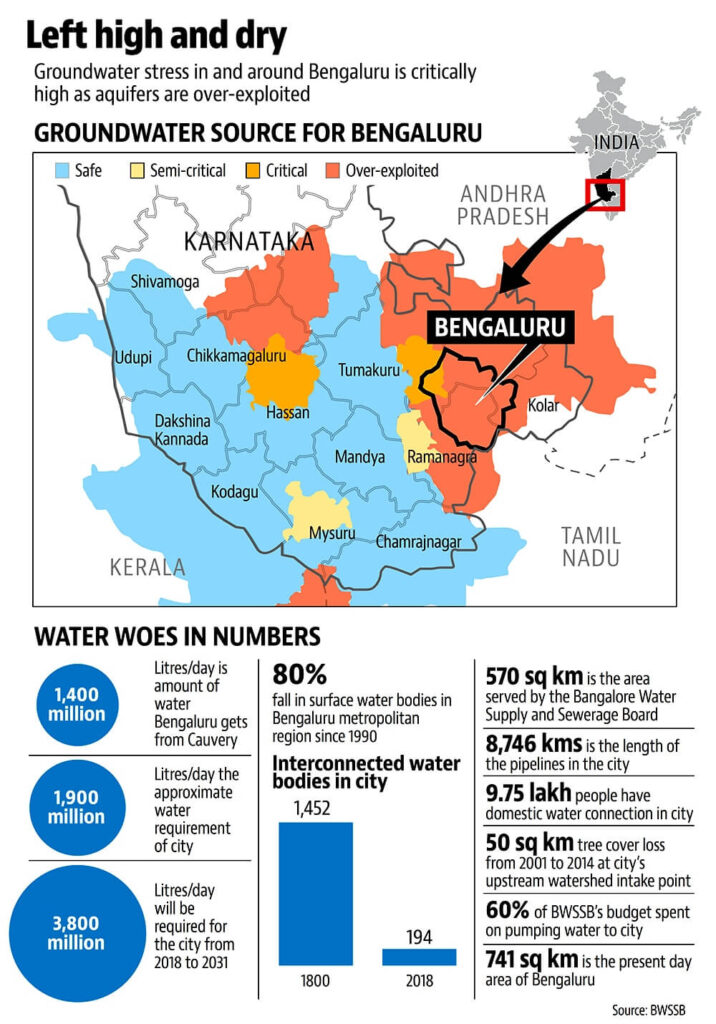
This desperation has given rise to the “water tanker mafia,” exploiting the city’s scarcity. While the wealthy can afford to pay for water, the poor are left struggling to survive. As one respondent put it, “It’s not just about paying for water anymore; it’s about survival.” The city’s water crisis has turned a basic necessity into a black-market commodity, deepening the divide between the haves and have-nots.
A City at a Crossroads
Bengaluru’s transformation tells a story of intertwined struggles, where environmental degradation and infrastructural decline fuel one another. New research utilizing systems like BuiS (Bangalore Information System) and BLIS (Bangalore Lakes Information System) highlights the devastating impact of unplanned urbanization on the city.
As the city grapples with this chaos, it risks losing its essence—the very soul that once made it the Garden City. Corruption continues to rise, and many residents are increasingly concerned about the lack of transparency and accountability. Here’s how our respondents felt.
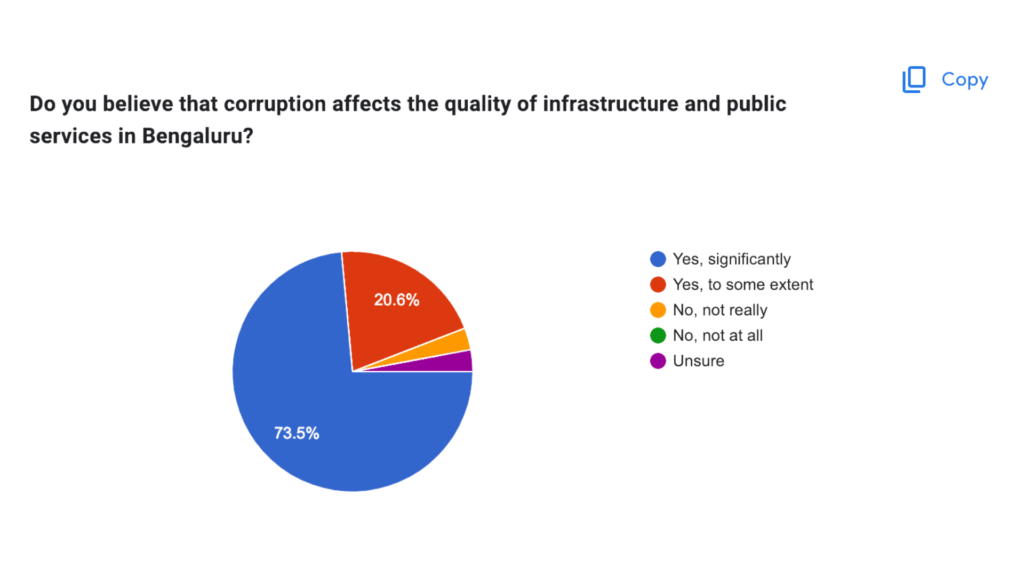
As the clock ticks, residents are left asking: “Is this the Bengaluru we want for future generations?
We’d love to hear your thoughts—what do you think can be done to restore Bengaluru to its former glory, while embracing modernity? A special thank you to everyone who contributed their experiences and insights through the survey—your voices are the heart of this series.
Passionate about writing or have a unique perspective to share? We invite writers to join the conversation. If you’d like to contribute, please send your work to [email protected]. Let’s continue exploring stories that matter, with authenticity and a genuine love for the topics that shape our world. Share your opinions in the comments section below and be part of the discussion.